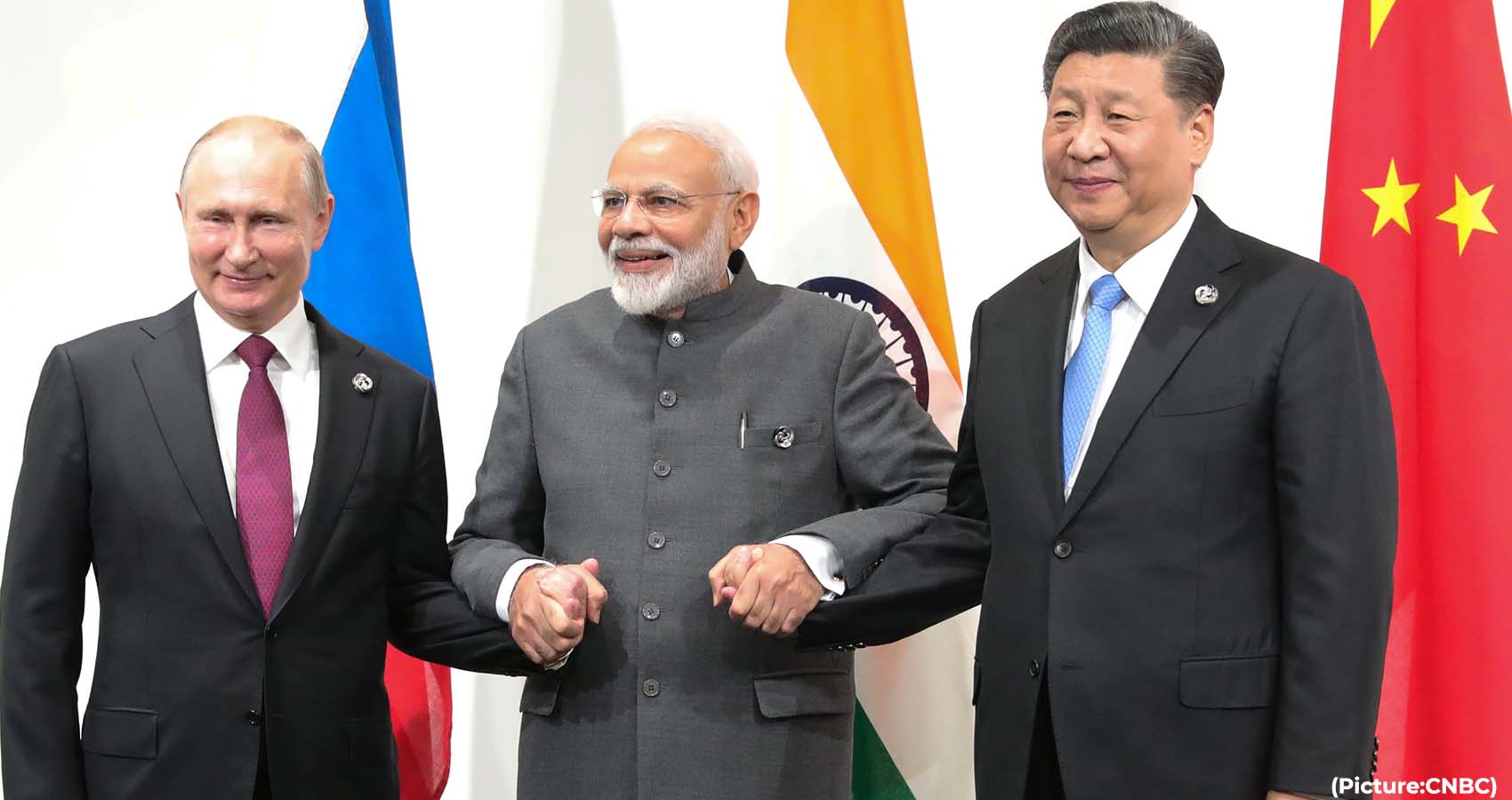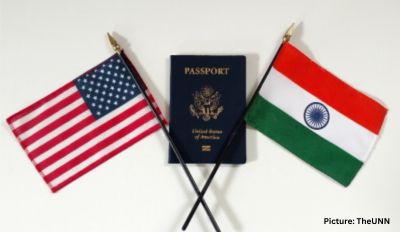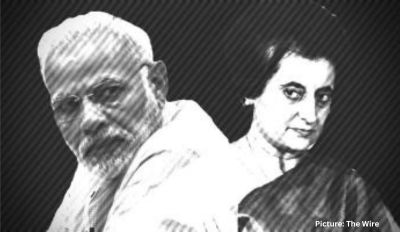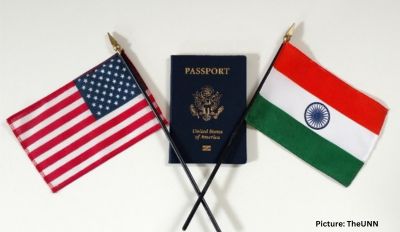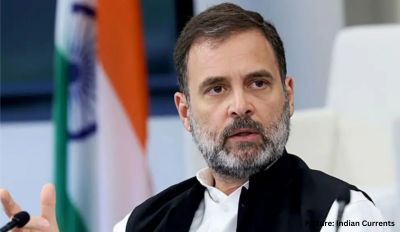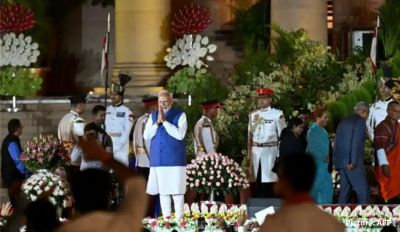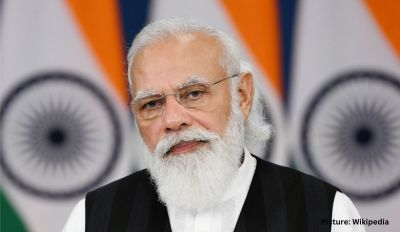India’s neutrality over the war in Ukraine has exposed its vulnerability. New Delhi depends on Russia for military supplies, and so, even though Russia is blatantly violating Ukraine’s territorial sovereignty in an attempt to re-create its erstwhile empire, India has opted to stay silent. It has done so even though India, as a former colony, knows all too well what it’s like to be the victim of imperialism. It has done so even though its own territorial integrity is threatened by another authoritarian power—namely, China. India, it seems, feels caught in a vise grip by Moscow.
To some extent, New Delhi’s concerns are understandable. Russian President Vladimir Putin has not been shy about cutting trade with states that condemn his invasion. But viewed more broadly, New Delhi’s approach is shortsighted and risky. It ignores the dangerous precedent that Russia’s reckless behavior is setting in other parts of the world. It provides diplomatic cover to China—Moscow’s most conspicuous international backer—to also ignore Russia’s bad behavior. And although criticizing the invasion might worsen relations with Russia, refusing to take a stand could alienate an even more powerful country: the United States.
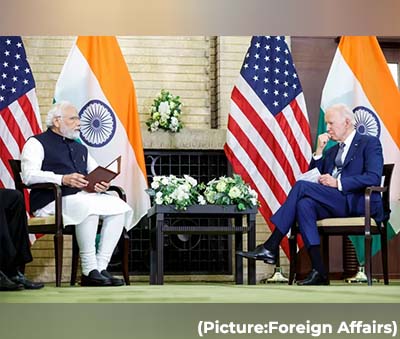 The prospect of upsetting Washington should be particularly concerning for Indian policymakers. The United States has become one of New Delhi’s most important partners, particularly as India tries to stand up to Chinese aggression in the Himalayas. But although Washington is not happy that New Delhi has refused to condemn Russian aggression, Indian policymakers have calculated that their country is so central to U.S. efforts to counterbalance China that India will remain immune to a potential backlash. So far, they’ve been right; the United States has issued only muted criticisms of Indian neutrality. Yet Washington’s patience is not endless, and the longer Russia prosecutes its war without India changing its position, the more likely the United States will be to view India as an unreliable partner. It may not want to, but ultimately New Delhi will have to pick between Russia and the West.
The prospect of upsetting Washington should be particularly concerning for Indian policymakers. The United States has become one of New Delhi’s most important partners, particularly as India tries to stand up to Chinese aggression in the Himalayas. But although Washington is not happy that New Delhi has refused to condemn Russian aggression, Indian policymakers have calculated that their country is so central to U.S. efforts to counterbalance China that India will remain immune to a potential backlash. So far, they’ve been right; the United States has issued only muted criticisms of Indian neutrality. Yet Washington’s patience is not endless, and the longer Russia prosecutes its war without India changing its position, the more likely the United States will be to view India as an unreliable partner. It may not want to, but ultimately New Delhi will have to pick between Russia and the West.
Stay informed.
In-depth analysis delivered weekly. It should choose the West. The United States and its allies can offer India more—diplomatically, financially, and militarily—than can Russia. They can better help New Delhi stand up to China. In the short term, this reorientation may make procurement difficult for India’s military, but Russia’s invasion has already weakened Moscow’s ability to provide India with supplies. New Delhi, then, has little to lose by throwing its lot in with the United States and Europe, and it ought to use Russia’s invasion as an opportunity to boldly shift away from Moscow.
GO WEST
When it comes to the war, India is something of an outlier among the world’s democracies. The United States, Canada, almost all of Europe, and multiple countries in Asia and the Pacific—including Australia, Japan, New Zealand, South Korea, and Taiwan—have condemned and sanctioned Russia for its invasion of Ukraine. India, by contrast, has remained neutral.
Indeed, New Delhi has arguably even supported Moscow. Unlike most of the world, it has actively increased its economic ties to Russia since the war began. According to The New York Times, India’s crude oil purchases from Russia went from 33,000 barrels per day in 2021 to 300,000 barrels a day in March and then to 700,000 a day in April. Indian importers are purchasing Russian liquified natural gas on the so-called spot market at reduced prices. India’s buys are still far smaller than those made by European countries, but the latter states are working to drastically reduce their dependence on Moscow. India, by contrast, has handed Russia a possible lifeline. It’s no surprise, then, that Moscow has praised New Delhi for, as Russian Foreign Minister Sergey Lavrov put it, “taking this situation in the entirety of facts, not just in a one-sided way.”
For now, U.S. officials have been tolerant of India’s behavior. They understand that the country relies on Russian military hardware, and they recognize that India cannot break its dependence overnight. But there’s a difference between neutrality and support, and as Russian atrocities mount and India continues to import large amounts of Russian crude oil and gas, Washington may begin to see New Delhi as an enabler. To preserve the United States’ deepening relationship with India, U.S. policymakers will want to ensure that India is not facilitating Russia’s invasion.
They will also want New Delhi to turn to other military suppliers. If India doesn’t do so, it will become more difficult for the United States to increase its transfer of sophisticated defense technologies to New Delhi, since Washington cannot expose its high-tech equipment to Russian systems. Under the U.S. Countering America’s Adversaries Through Sanctions Act, India could even face economic penalties for its ties to Moscow. India recently purchased an S-400 air defense system from Russia, and unless U.S. President Joe Biden decides to waive the penalties for national security reasons, Indian officials could be hit with restrictions on access to U.S. loans from U.S. financial institutions and prohibitions on bank transactions subject to U.S. jurisdictions, among other sanctions. The White House appeared to be on a path to waive the sanctions, but that was before Russia’s February 24 invasion of Ukraine. Now, it is no longer clear what the administration will do.
New Delhi has arguably supported Moscow.
Thankfully for Indian-U.S. relations, there are signs that India may be starting to reduce its military ties with Moscow. The country has been gradually cutting its defense imports from Russia over the last several years, and Indian media recently reported that the country has cancelled plans to upgrade its Russian Su-30 MKI fighter aircraft because the war has made it harder for Moscow to supply New Delhi with spare parts. This month, India halted negotiations with Russia to acquire ten Ka-31 airborne early warning helicopters, also over concerns about Moscow’s ability to fulfill the order. But 80 percent of the country’s current military stocks still consist of Russian-origin equipment.
For India, curtailing dependence on Russian military gear is not just the right move for moral reasons. Ultimately, it will also help advance the Indian’s military modernization goals. As Russia becomes poorer and increasingly isolated, it will be less and less able to assist the Indian military (a fact that the canceled orders illustrate). That’s because Russia will have fewer high-quality weapons to sell, and it will need to focus more on replenishing its own military stocks, particularly as it loses access to critical Western technologies. New Delhi, then, should move quickly to find other countries that manufacture spares and upgrades for Russian-made equipment. And over the long term, India should focus on building up domestic military production so that it becomes less dependent on other countries for its national defense.
CARROTS WITHOUT STICKS
India has refused to condemn Russia’s invasion for reasons beyond just its military needs. Moscow has long offered diplomatic support to India, including over the issue of Kashmir, and New Delhi is reticent to antagonize a friend. But in recent years, Russia has become far less dependable. For example, Russia has recently made overtures to Pakistan, perhaps India’s biggest antagonist. Last year, Lavrov visited Islamabad, and he pledged that Moscow would boost military cooperation and construct a $2.5 billion gas pipeline between Pakistani cities—Russia’s first major economic investment in Pakistan in 50 years.
Even more alarming for New Delhi was the release of Beijing and Moscow’s historic joint manifesto. Announced on February 4, following a meeting between Russian President Vladimir Putin and Chinese President Xi Jinping, the 5,000-plus word document heralded an era of newly deep Chinese-Russian relations. For India, this partnership could not come at a worse time. In June 2020, Beijing and New Delhi came to blows after China spent months deliberately building up its forces at several points along the Line of Actual Control that divides the two nations. The resulting fight killed 20 Indian soldiers and at least four Chinese troops—the first deaths along the disputed border since 1975.
Following the clash, New Delhi turned to Moscow for diplomatic assistance, hoping that Russia could defuse tensions and prevent an all-out conflict. Indian officials calculated that Russia had more influence and leverage with Beijing than did any other country, and that it might therefore be able to get China to step back. And Moscow did host a virtual Russia-China-India trilateral meeting of foreign ministers shortly after the fight.
Moscow has long offered support to India, and New Delhi is reticent to antagonize a friend.
But ultimately it was Washington that backed India with robust material and moral support in its time of crisis. It publicly vowed to stand with India in the country’s efforts to protect its territorial sovereignty, and it expedited the leasing of two MQ-9B surveillance drones. It gave winter military gear to Indian troops. Most important, Washington enhanced information and intelligence sharing with New Delhi. This marked a turning point in Indian-U.S. relations. Before the clash, Indian policymakers had actively debated whether India could count on the United States for support in a conflict with China. Washington’s response made it clear that the answer is yes.
In the years since, ties between the two countries have only grown stronger. The U.S. Indo-Pacific strategy, released in mid-February, made clear that India plays a critical role in Washington’s efforts to compete with Beijing. The Biden administration further affirmed U.S.-Indian ties in April by hosting a 2+2 dialogue between the U.S. secretary of state, the U.S. secretary of defense, and their Indian counterparts. It added a virtual meeting between U.S. President Joe Biden and Indian Prime Minister Narendra Modi at the last minute, further signaling the importance of U.S.-Indian relations.
The United States’ allies have largely followed its lead. British Prime Minister Boris Johnson made a visit to India in April to advance negotiations on a British-Indian trade deal and to streamline licensing for British military exports. Three days later, European Commission President Ursula von der Leyen visited New Delhi, where she and Modi agreed to establish a joint trade and technology council and to resume negotiations on an EU-Indian free trade agreement.
Washington should not pressure India to criticize Russia.
These steps have all signaled to India that it is welcome to partner with the West. But if the United States wants to move New Delhi further into its camp and away from Moscow’s, it should take additional measures. Washington could give New Delhi even more access to sensitive U.S. technologies that would enhance Indian defense capabilities. It could also provide incentives to U.S. private companies to co-develop and co-produce additional high-tech military equipment in India. It might make its military gear more affordable for India. Recent media reports indicate Washington may be getting ready to take a step in this direction by providing a $500 million Foreign Military Financing package to incentivize India to purchase U.S. weapons. (Given India’s robust defense requirements, however, this is still a small amount.)
What Washington should not do is pressure India to criticize Russia. New Delhi strongly values having an independent foreign policy, and so it would bristle at being told how to act. But U.S. officials can be clear that they will offer India more help, more quickly, if the country reduces its reliance on Russian military systems.
The United States can also help woo India by encouraging the Quad to cooperate on Ukraine in policy domains where all members can agree. During the 2+2 talks, for example, Indian and U.S. officials discussed how to deal with global fuel and food shortages stemming from the war. Biden, Modi, and the Quad’s other two leaders (the prime ministers of Australia and Japan) should also discuss these brewing crises. Talking about such issues will be productive—every member of the Quad has a strong incentive in stopping famines—while avoiding excoriations of India for its neutral position on the war. India wants to be engaged, not shamed, and so this lighter approach is Washington’s best bet for bringing India’s response to the war in Ukraine into alignment with its own.
FRIENDS IN HIGH PLACES
For India, closely embracing the West may be discomforting. New Delhi has a proud tradition of strategic autonomy, and it prefers a multipolar world in which it does not have to choose between major geopolitical blocs. Beijing knows this and has been happy to play into India’s concerns. It relishes the current situation in no small part because it views the conflict as an opportunity to woo India with promises of a multipolar world while at the same time driving a wedge between New Delhi and Washington.
But India should recognize that it would be a loser in such a system. China and Russia’s version of multipolarity would make it easier for authoritarian powers with revisionist goals to redraw borders, as China hopes to do in the Himalayas. Beijing and Moscow’s manifesto should underscore these risks. As part of the document, both states criticized the U.S. Indo-Pacific strategy—which promises stronger cooperation with India.
But the best way for the country to protect itself is to not play into China’s and Russia’s hands. It is, instead, to exude strength—including by speaking out against Russian aggression, rather than being cowed by Moscow. And that means New Delhi should deepen its partnership with the United States, the country best positioned to help India achieve its great-power ambitions.

